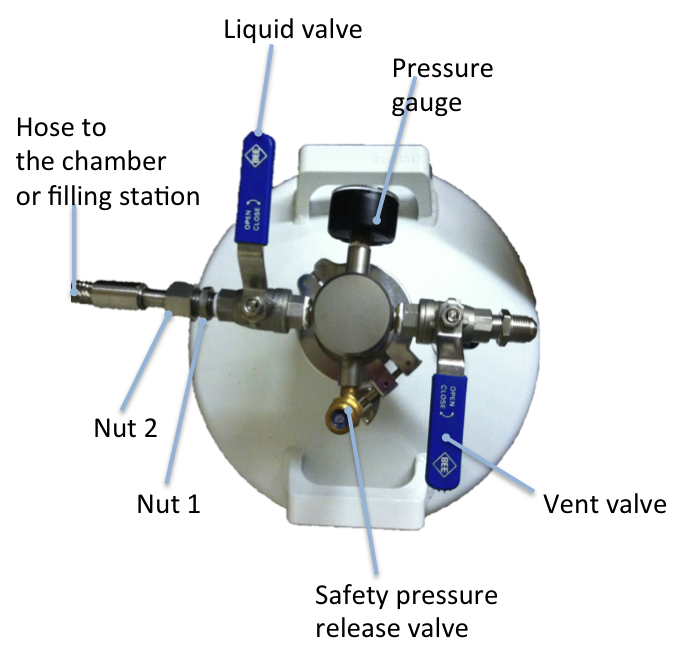Table of Contents
Liquid Nitrogen LN2 Safety
LN2 has a boiling point of -195C. If it touches your skin, it will severely burn you. LN2 expands almost 700 times in air. It can deprive a closed space from oxygen, leading to death of anybody in the room.
As long as you enter the lab, you have the oxygen monitor turned on and on you. It is especially important to do so when you are using liquid nitrogen to test, because during a test, LN2 is poured into the chamber and evacuated directly in the room.
Cryogenic safety training
You have to complete the cryogenic safety training to be allowed to work with liquid nitrogen. You can also contact Tom Benassi in the ME office if you need hands-on training and nobody in the lab is able to provide it.
You should enter the number for JHU Security in your phone so that if there is an emergency and you need to leave the room (generally first thing to do), you will be able to call JHU Security from the hallway.
Oxygen sensor alarm
The oxygen sensor alarm will be triggered if the percentage of oxygen in the room is too low or too high. In both cases, serious injuries or death can occur.
<fc #ff0000>If the alarm goes off</fc>
- Leave the room immediately.
- Keep the lab door closed.
- THEN and only then, call Tom Benassi, ME Laboratory manager - 410-516-5586
- Wait for the alarm to stop.
- Make sure nobody enters the room
- Remain on the scene, but at a safe distance, to receive and direct safety personnel when they arrive.
LN2 leak
<fc #ff0000>If the dewar is leaking and there is liquid nitrogen on the floor,</fc>
- <fc #ff0000>If the liquid spill is so large that it is running out into the hallway, pull the fire alarm and evacuate the building</fc>
Otherwise
- leave the room immediately
- call JHU Security
- Make sure nobody enters the room
- Remain on the scene, but at a safe distance, to receive and direct safety personnel when they arrive.
Personal Protective Equipment
While manipulating the dewar and testing using liquid nitrogen,
*Always wear:
- Lab Coat
- Closed shoes (no flip flops in the lab)
- Pants (no short or skirt in the lab)
- Long sleeves on your arms
- Do not roll up sleeves or pant legs, it traps liquid next to the skin if there is a spill
- Goggles
- Cryogloves
* Do not wear metal jewelry or watches
* Place the oxygen sensor close to you or on you.
Before thermomechanical testing
- Check the level of the dewar on the pressure gauge (see picture next page)
- For the chamber to be operational, the pressure in the dewar must be over 10 Psi (and lower than 25 Psi). If you just filled or vented the dewar and the pressure is lower, you have to wait for the dewar to self-pressurize again (this can take 24 hours).
The dewar:
 The Airgas dewars generally have metal plaques on each valve indicating which is the vent and which is the liquid.
The Airgas dewars generally have metal plaques on each valve indicating which is the vent and which is the liquid.
- The liquid valve is used to transfer the liquid nitrogen in and out of the dewar. Make sure that the hose is secure before opening the liquid valve. Nut 2 and Nut 1 must be tight. Use the appropriate wrench.
- DO NOT OPEN THE VENT VALVE. The vent valve is used to vent the air out while filling the dewar with liquid. The dewars are delivered full to the lab. Opening the vent valve will cause a lot of extremely cold nitrogen gas and sometimes nitrogen drops to spill out, in addition to lowering the inside pressure.
- The safety pressure release valve releases air from the dewar when the pressure overbuilds so that it stays at the targeted pressure. It can be noisy but is part of the normal functioning of the dewar. DO NOT tamper with the safety pressure release valve. Evacuate if the safety pressure release valve is stuck in venting position as it will continuously release nitrogen into the room, making the air unbreathable.

